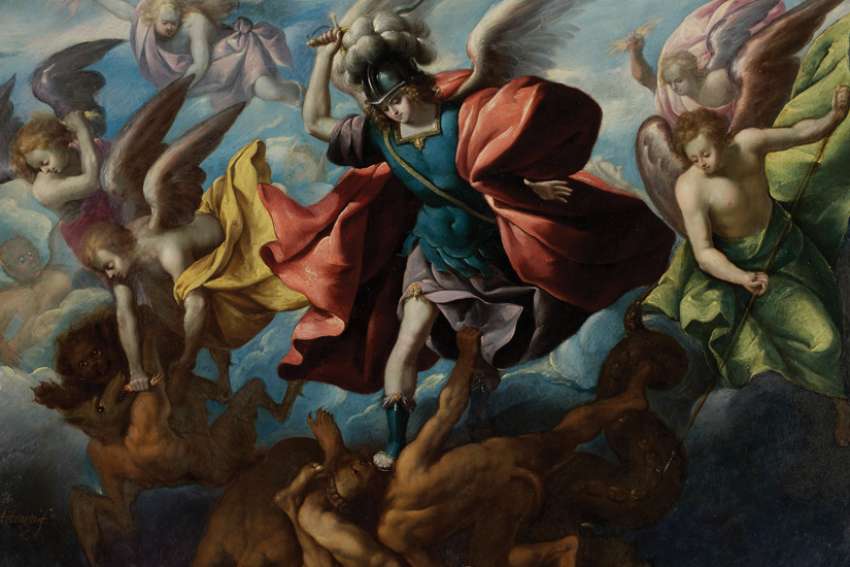The Fates of Man are featured in a new exhibition at the Art Gallery of Ontario that spans 400 years of art from the Spanish Empire. “Faith and Fortune: Art Across the Global Spanish Empire” brings together sculpture, painting, ceramics and more from the Philippines, Latin America and Spain, beginning with Columbus stumbling across the island of Hispanola in 1492 and ending with Spain’s defeat at the hands of the Americans in 1898.
Whether it’s the vivid and colourful work of Caspicara or a 16th-century Filipino statue of Santo Nino (Jesus as a child), the expressive realism of religious art produced by colonized people throughout the Spanish Empire is remarkable, said AGO assistant curator of European art Adam Harris Levine.
“Affect and emotional response are really important motivators for Spanish and Indigenous artists who are working in the Spanish Empire,” Levine said.
This colourful and emotive style had everything to do with the Counter Reformation. Depictions of martyrs and Christ’s passion “are very vivid, very bloody. This is really in stark contrast to Protestant aesthetics,” said Levine.
Indigenous artists brought traditional materials and techniques to bear on religious subjects as they adapted to life in the empire. From vastly divergent cultures and places, the artists shared an imperative to get real in their art.
“Some artists even used glass eyes or ivory teeth,” said Levine. “These sorts of multi-media elements that make sculptures even more lifelike.”
Like Santo Nino sculptures that can be found today in Toronto parishes and Filipino homes, the 500-year-old version on display at the AGO would have been dressed up in real, textile clothing.
“All of this is about enhancing the semblance of reality with sculptures,” said Levine. “It’s just about dialing up these sculptures and making them very vivid, very intense. I think of them as tools for devotion.”
Opening June 8, in time for Filipino Heritage Month, the show will have broad appeal to nearly 300,000 Torontonians of Filipino descent.
“What’s interesting to me is that with the Philippines and many countries across Latin America, these are today some of the most Catholic countries on Earth,” said Levine. “It’s obvious to me that Catholicism has survived sovereignty movements and independence. It’s very clear that Catholicism remains an important social institution in many of the countries in the exhibition, long after Spain had exited.”
Glimpses of the Philippines under Spain are featured in 15 never before exhibited daguerrotypes, likely the work of globe-trotting French official Jules Alphonse Eugene, who stopped by Manila on his way to China in the 1840s. Scenes such as the Binondo Church in Manila’s Chinatown and the Mariquina River near the Casa de Hacienda show a Spanish city planted in an entirely new environment.
“While the chronology of the exhibition ends in 1898, one of the key issues in the show is what are the legacies of colonization that live on in contemporary society?” Levine said. “While the show is about 400 years of history, it’s very much told through a 2022 lens and it’s very much for a 2022 audience. We see that there are a lot of legacies of colonization that we need to reckon with as a contemporary, civic society in Toronto and in the countries that are featured in the exhibition.”


